Learn How and When to Start Gardening!
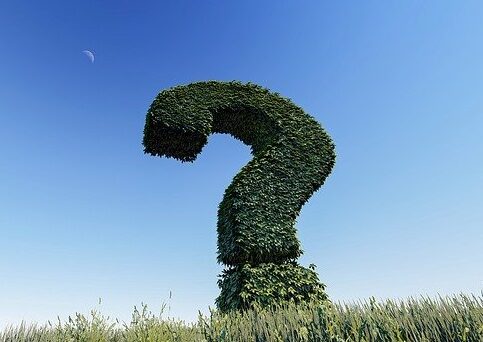 If you’re anything like me, you are trying to figure out how and when to start gardening, what to plant and where. I’ve discovered that not only do different plants like different kinds of soil, light and watering schedules, but they also have differing planting schedules.
If you’re anything like me, you are trying to figure out how and when to start gardening, what to plant and where. I’ve discovered that not only do different plants like different kinds of soil, light and watering schedules, but they also have differing planting schedules.
I grew up thinking you plant all seeds in the spring, grow them through the summer, and harvested in the fall, with dormancy happening during winter. 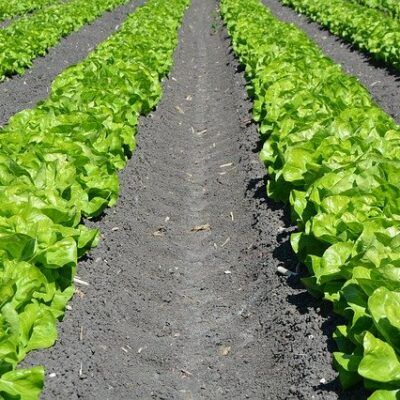 Little did I know that there are several planting and harvesting times! With that knowledge, a new question arose.
Little did I know that there are several planting and harvesting times! With that knowledge, a new question arose.
When to start gardening became more complicated because I wasn’t even sure when I should start. The good news is that there’s never a bad time to start. There are always things to do to prepare, if not immediately plant things in your garden.
Table of Contents
Fall
 This is what I would consider to be my season of choice to start a garden…just not in the way most people think of. The autumn is the best time to get your garden set up for success! Fall is so named for the dropping of the foliage.
This is what I would consider to be my season of choice to start a garden…just not in the way most people think of. The autumn is the best time to get your garden set up for success! Fall is so named for the dropping of the foliage.
In nature, this leaf-litter becomes the nutrient rich bounty in which the next generation of seedlings will sprout. The annual call for neighbor’s bags of leaves is a tradition many gardeners look forward to. Last year I was able to gather so many bags that I was able to feed my garden the whole year!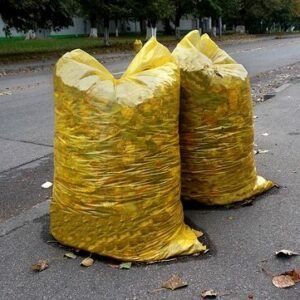
The decomposition of the leaves can take several months when left on it’s own; but with a little help from the handy gardener, those nutrients can be unlocked much sooner!
Our garden beds always start off looking like a big leaf pile that the kids are about to jump in. (They sometimes do!) We use the 3, 2, 1 method.
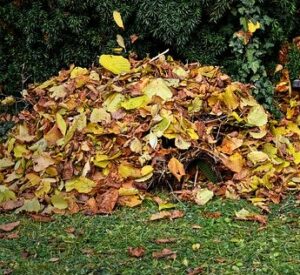 Add leaves to the pile every 3 months. Water the pile 2 times a month. Turn the pile 1 time each month. There is nothing special or scientific to this, it’s just a method we use to keep things simple. This method of composting where you will be growing works the best if there’s nothing in the bed yet. (It can work with existing plants, but you have to be cautious to not damage the roots or the stalk/leaves.)
Add leaves to the pile every 3 months. Water the pile 2 times a month. Turn the pile 1 time each month. There is nothing special or scientific to this, it’s just a method we use to keep things simple. This method of composting where you will be growing works the best if there’s nothing in the bed yet. (It can work with existing plants, but you have to be cautious to not damage the roots or the stalk/leaves.)
In the fall, I also throw my kitchen scraps into these piles. This is needed for the actual process of the composting to occur. For more information on composting, check out my article on that here!
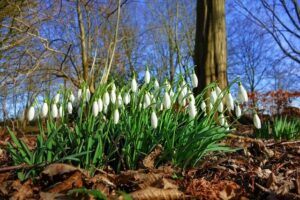 These leaves not only provide wonderful starter material for the spring seedlings, but they can also protect your perennials too! Leaves make a great natural mulch. This helps retain precious moisture as well as serve as a biodegradable blanket that will help preserve your plants through colder temperatures as we head into winter.
These leaves not only provide wonderful starter material for the spring seedlings, but they can also protect your perennials too! Leaves make a great natural mulch. This helps retain precious moisture as well as serve as a biodegradable blanket that will help preserve your plants through colder temperatures as we head into winter.
Starting your garden in the fall is not only full of things to do, but is the best time to get started if you want to have a thriving garden the rest of the year!
Winter
Winter just might be my favorite time for the decorator in me. The winter allows you to see the skeleton of your garden, if you will. The dormancy of the plants brings out the natural shape of your garden beds.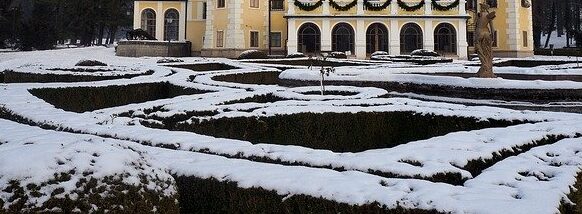
This time of year is great for getting creative with the layout of your garden. If a bed didn’t work very well in a particular orientation, change it up! With all the leaves gathered in the fall, and a little planning ahead, you can set your garden up for success before anything is in the ground.
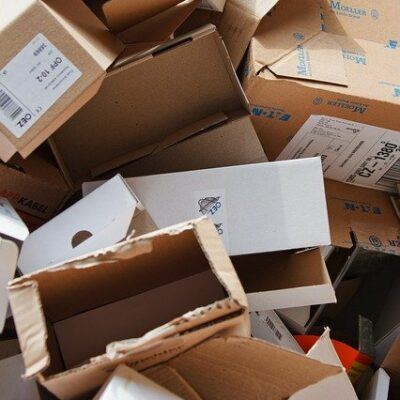 Winter is the holiday season, and as such, cardboard abounds from different delivery companies, and gift wrappings. Any of these that don’t have any heavy ink or plastic in it, can be used in the garden to build new beds! (Set aside all those Amazon boxes, just remember to remove the tape.) Your new beds will thank you for it!
Winter is the holiday season, and as such, cardboard abounds from different delivery companies, and gift wrappings. Any of these that don’t have any heavy ink or plastic in it, can be used in the garden to build new beds! (Set aside all those Amazon boxes, just remember to remove the tape.) Your new beds will thank you for it!
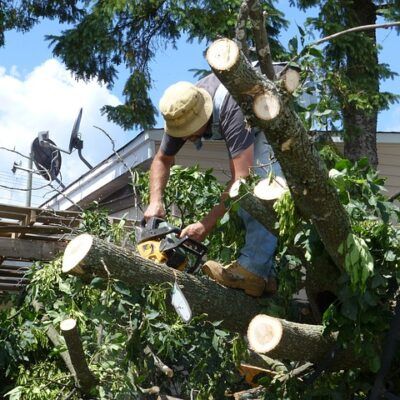 Planning a new bed can get confusing unless you have physical boundaries. This is where winter throws you a bone… or a log to be specific. Often times in winter, especially if there are cold snaps or heavy snow, trees get damaged. Sad for the tree and the owner, but lucky for us! When this happens, either a limb or a whole trunk, these fallen warriors are often pieced up and put on the curb for bulk trash pick-ups.
Planning a new bed can get confusing unless you have physical boundaries. This is where winter throws you a bone… or a log to be specific. Often times in winter, especially if there are cold snaps or heavy snow, trees get damaged. Sad for the tree and the owner, but lucky for us! When this happens, either a limb or a whole trunk, these fallen warriors are often pieced up and put on the curb for bulk trash pick-ups.
These fresh logs and sliced up stumps make perfect garden bed walls and plant stands to give your garden some visual dimension. Not only that- they’re (most often) free! Between the leaves and the logs, we’ve got the bones to build a beautiful garden! In fall we discussed the benefits of gathering the leaves for composting and mulching. In winter, we put those things to use with our new logs!
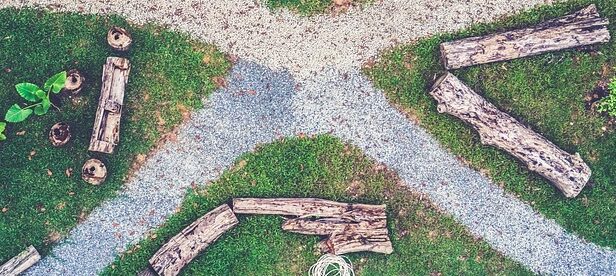
When you set up your new garden bed, figuring out the location, size and shape are the first steps. With that information, the logs can serve as your physical boundaries, the cardboard simply goes down under the logs and inside the bed as a weed barrier and the leaves help prepare the bed itself.
(Pro tip: Have at least 3 inches of cardboard showing on the outside of your log barrier to prevent weeds from creeping up on your freshly prepared nursery in the spring.)
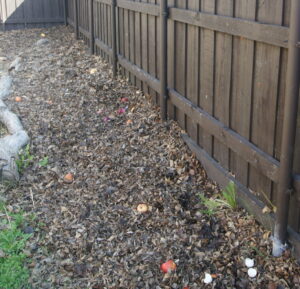
Fill in the bed with leaves. Add occasional kitchen scraps (coffee grounds, egg shells, apple cores, banana peels, cutting board remnants, etc.) and use the 3, 2, 1 method to create a seedling paradise for the spring.
Of course, you can also get seed trays with good drainage and a dome or clear baggie over the top, some seedling soil, and seeds themselves to start germinating in the winter so they’ll be ready to plant as soon as the danger of the last frost has passed. That’s always fun too, because I feel like I’ve got a tiny green house for fairies on my counter for a few weeks.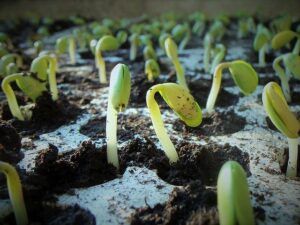
There’s so much to do in the winter, that you can get started gardening while it’s too cold for anything to grow still!
Spring
 Spring is when a lot of people catch the gardening bug. All the stores are full of seedlings and gardening supplies or decorations, and it starts to feel wonderful outside. Nature is starting to wake from her slumber and it seems to infect everything! This time of year is a great time to get started if you haven’t yet. With seeds being sold everywhere you look and the first sprouts of spring making their debut, nothing encourages the latent gardener like spring time!
Spring is when a lot of people catch the gardening bug. All the stores are full of seedlings and gardening supplies or decorations, and it starts to feel wonderful outside. Nature is starting to wake from her slumber and it seems to infect everything! This time of year is a great time to get started if you haven’t yet. With seeds being sold everywhere you look and the first sprouts of spring making their debut, nothing encourages the latent gardener like spring time!
 The weather is probably the most immediate incentive to getting outside and working in the garden. After the long, dark and cold winter months, a warmer spring day with the sun getting stronger every day is hard to deny.
The weather is probably the most immediate incentive to getting outside and working in the garden. After the long, dark and cold winter months, a warmer spring day with the sun getting stronger every day is hard to deny.
Make sure you know what zone you are in, and start buying those seeds! If you aren’t sure which zone you belong to, here is a great website that breaks down your zone as well as the planting schedule for whatever type of plant you are looking to start. You can also check the packaging for whatever seeds or transplants you get and there is typically a short description of when, how and where to plant for ultimate growing success.
 Spring is for sure the most gratifying time to start gardening, with seeds germinating left and right, and the weather cooperating most of the time. It can also be, in my humble opinion, the most expensive time when considering when to start gardening. If the fall and winter seasons haven’t been utilized, then a lot of the preparation that you can do relatively for free during those times will cost you in your pocketbook.
Spring is for sure the most gratifying time to start gardening, with seeds germinating left and right, and the weather cooperating most of the time. It can also be, in my humble opinion, the most expensive time when considering when to start gardening. If the fall and winter seasons haven’t been utilized, then a lot of the preparation that you can do relatively for free during those times will cost you in your pocketbook.
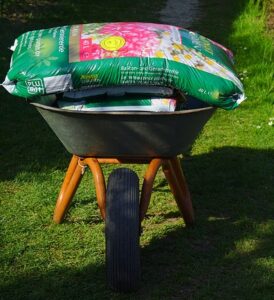 The natural decomposition of the leaves and abundance of curbside gardening materials for garden bed prep is done specifically to avoid the costs of purchasing those same materials from your local hardware store/garden center during planting season.
The natural decomposition of the leaves and abundance of curbside gardening materials for garden bed prep is done specifically to avoid the costs of purchasing those same materials from your local hardware store/garden center during planting season.
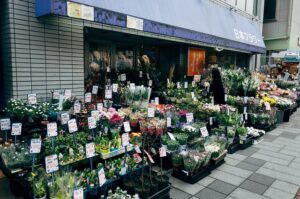 Not only do you have the additional costs of materials, but there is a higher demand for those materials, so you’ll occasionally find yourself going from place to place (in person or virtually) to find materials that might be out of stock due to increased seasonal demand.
Not only do you have the additional costs of materials, but there is a higher demand for those materials, so you’ll occasionally find yourself going from place to place (in person or virtually) to find materials that might be out of stock due to increased seasonal demand.
Summer
With the growing season in full swing, summer is a time when tending the garden comes into full swing. (Weeds, weeds, weeds!)
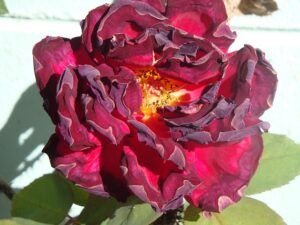 There are some plants that will tolerate being planted in the heat of the summer, but this is the time to make sure to do your research. There is nothing worse than falling in love with a particular plant, only to bring it home, plant it, and see it die off in the summer sun. Here’s an example of heat damage to a rose.
There are some plants that will tolerate being planted in the heat of the summer, but this is the time to make sure to do your research. There is nothing worse than falling in love with a particular plant, only to bring it home, plant it, and see it die off in the summer sun. Here’s an example of heat damage to a rose.
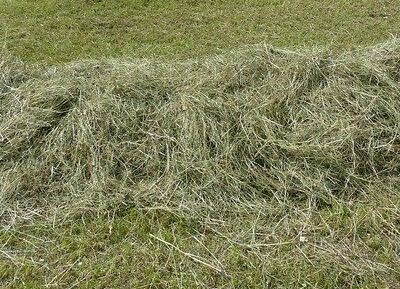 Water schedules are often a handy helper too during the long summer months. With the summer growth of all plants, your grass can be an unexpected friend. Depending on how you maintain your lawn, grass clippings are a wonderful addition to the compost pile!
Water schedules are often a handy helper too during the long summer months. With the summer growth of all plants, your grass can be an unexpected friend. Depending on how you maintain your lawn, grass clippings are a wonderful addition to the compost pile!
The kitchen scraps and fresh grass clippings (along with any freshly pulled weeds from the garden beds) will help add the nitrogen to the compost pile that is necessary for the acceleration of the breakdown of the woodier and tougher carbon heavy limbs or branches that might still be hanging around in the compost pile from fall/winter pruning.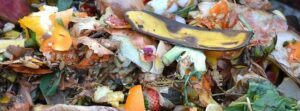
When it comes to starting a garden in the summer, a lot depends on where you live/what zone you are in, and how far into the year we are. There are some summer plants that can go from transplant to bloom or harvest within the summer season as long as you do your research.
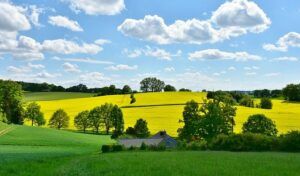 Summer is also a great time to prepare your fall beds and get an idea of what you will be starting from seed/transplanting for an autumn garden. There are a variety of plants that will thrive in the late summer and throughout the fall!
Summer is also a great time to prepare your fall beds and get an idea of what you will be starting from seed/transplanting for an autumn garden. There are a variety of plants that will thrive in the late summer and throughout the fall!
How and When to Start Gardening? There is no wrong time to start a garden!
When it comes down to it, every gardener is different. Some gardeners take a “by the book” approach. Others garden by instinct with some key research where necessary. The point is that you won’t know what kind of gardener you are until you get out there, put on some gloves, and get gardening! If you want to know when to start gardening, give now a try!
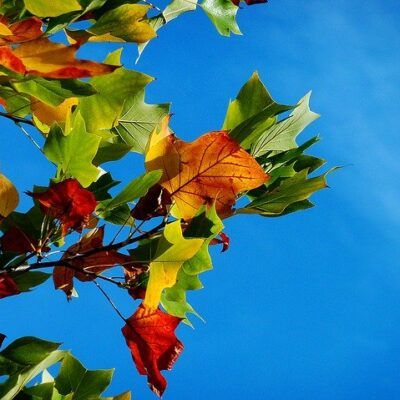 My opinion is that Fall is the best time to start, because the foundation for your garden is what is most important in the long term. Others feel differently and that’s fine, because we are all connected by the fact that we all love to get out and connect with nature in whatever way works for us. So get out there and don’t worry about when to start gardening, go grab a spade and get dirty!
My opinion is that Fall is the best time to start, because the foundation for your garden is what is most important in the long term. Others feel differently and that’s fine, because we are all connected by the fact that we all love to get out and connect with nature in whatever way works for us. So get out there and don’t worry about when to start gardening, go grab a spade and get dirty!
Did you like this article? Please share it on your preferred social media platform and help us grow!
If you would like to send me any stories or pictures of the start (and current picture) of your garden, send me an email at Randi@fairycirclegarden.com
Do you have any questions, comments or tips to share with myself or the community? Leave a comment below and I’ll get right back to you!
Gratefully yours,
Randi
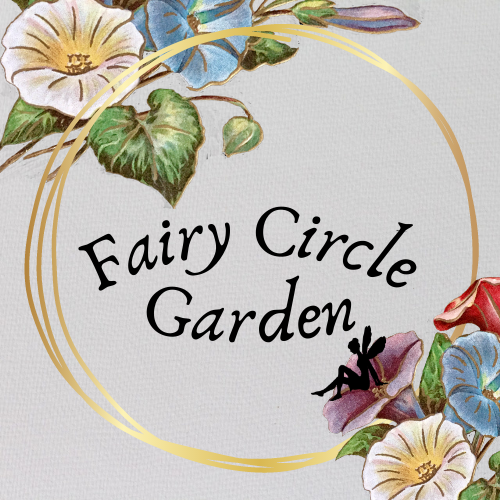
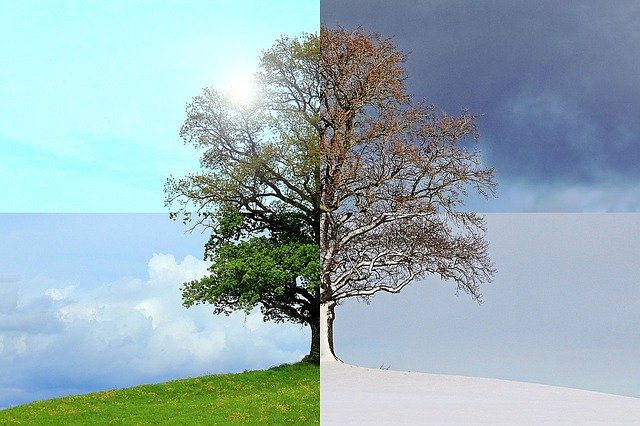
I really like how you explain everything about gardening. Your passion for it and expertise are clearly visible. As for the best time to start gardening, I agree with you, it is now. I have minimal experience, so your post here helps a lot to understand some basics. Thanks a lot for sharing this post and keep up the good work!
Thank you. I’m still learning, and love to engage with fellow gardening enthusiasts to expand my knowledge. Sometimes it’s more learning by doing, but you can’t put a price on the sharing of knowledge from those who know have done it before and learned the hard way. No matter what happens, you’ll always learn something. So never give up, and grab a spade and turn some dirt!
This is beautiful. Starting a garden any time of the year is such a novel idea. We all seem to believe there is a right time, but you are right, there isn’t. The best time is now. Thank u for this wonderful idea.
Regards,
Aparna
I remember catching the gardening bug in the dead of winter one year, and feeling frustrated that I wouldn’t be able to do anything for months. That’s when inspiration struck. I knew there had to be something I could do while awaiting the warmth of spring. That’s where this idea came from, and I’ve been crazy busy in my garden ever since! ? Thank you!
Hi Randi,
That is so good.
Such informative content, gardening plays a vital role in environmental development. These are small steps towards achieving a greener and cleaner planet earth.
Your concept of start gardening any time of the year is amazing and in-depth knowledge of how to go about doing it is commendable!
The knowledge you shared about building perfect beds for the soil by using leaf litter, cardboard, kitchen scraps like eggshells, vegetable, and fruit peels, and creating physical boundaries with the help of fallen logs/ sliced stumps are absolutely amazing.
Making us realize that considering the zone we stay in and how this affects gardening is important. And moreover, all that digging, planting, and weeding is a great physical exercise with immense benefits.
Cheers
samantha
Samantha,
I am so glad you enjoyed the info! I know gardening can be expensive and these types of tips help your wallet, your local environment and your physical (and spiritual/mental) health! I grew up during the big “Reduce, Reuse, Recycle” campaign, and I feel like that whole concept is tailor made for gardeners! Thanks for stopping by!
When to start a garden has all to do with our location. Just as with real estate, the success of the garden is all about location, -especially the type of sun we get. The first time I planted a garden I was infatuated with a flower that would not thrive where I had planted it.
So much truth! I like to say there is never a bad garden location, just inappropriate plants in the wrong garden. Sometimes it takes a try or two to find out which spot does best for the flower you’re looking to grow, and maybe a try or two on what will grow where you want your garden. Being flexible with “what” as well as “where” can end up yielding an amazing amount of joy!